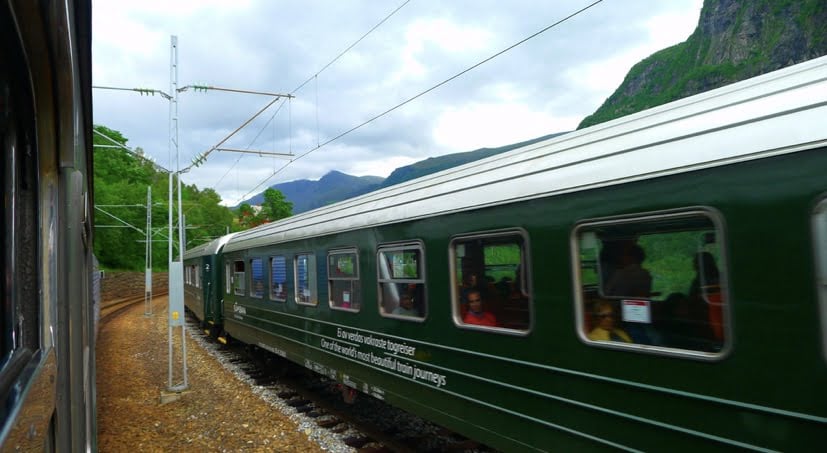
After a night in Oslo, Chris takes two of the world's most famous railway journeys.
This is the second in a three-part series on how to see the best of Norway on a budget. Read the first part all about Oslo.
The Oslo to Bergen Railway
The next part of your trip is the journey from Oslo to Flåm on the Bergen line and then the Flåmsbana; undoubtedly one of the most special you'll have in your life, no matter where you're from. I'd go so far as to say it ought to be on every European travellers bucket list.
It offers a journey that gets progressively more spectacular as the train ascends the glacier and upon descending into Flåm, you get to ride the steepest railway journey on the continent. The trip warrants some facts because simple phrases like “you'll not believe your eyes” or “photos don't it justice”, well, they don't do it justice.
It's over 100 years old, which is incredible when you look at the scenery and imagine the sheer ambition of the people stuck between a rock and a hard place. At its highest point, you're 1,237m above sea level, on the Hardangervidda plateau. When the train arrives in Finse, you're just 3 miles from the Hardangerjøkulen glacier and looking opposite you can see tongues of ice that signal the beginnings of a glacier.
There is a shock to be had to see thick slabs of ice in late August. but because of this landscape, Finse is an unbearably scenic train station. At Myrdal, your stop for the Flåmsbana, you’ll go from over 800m above sea level to sea level itself. Lonely Planet gave it the accolade of second best railway journey in Europe – the other was the Rauma line, also in Norway.
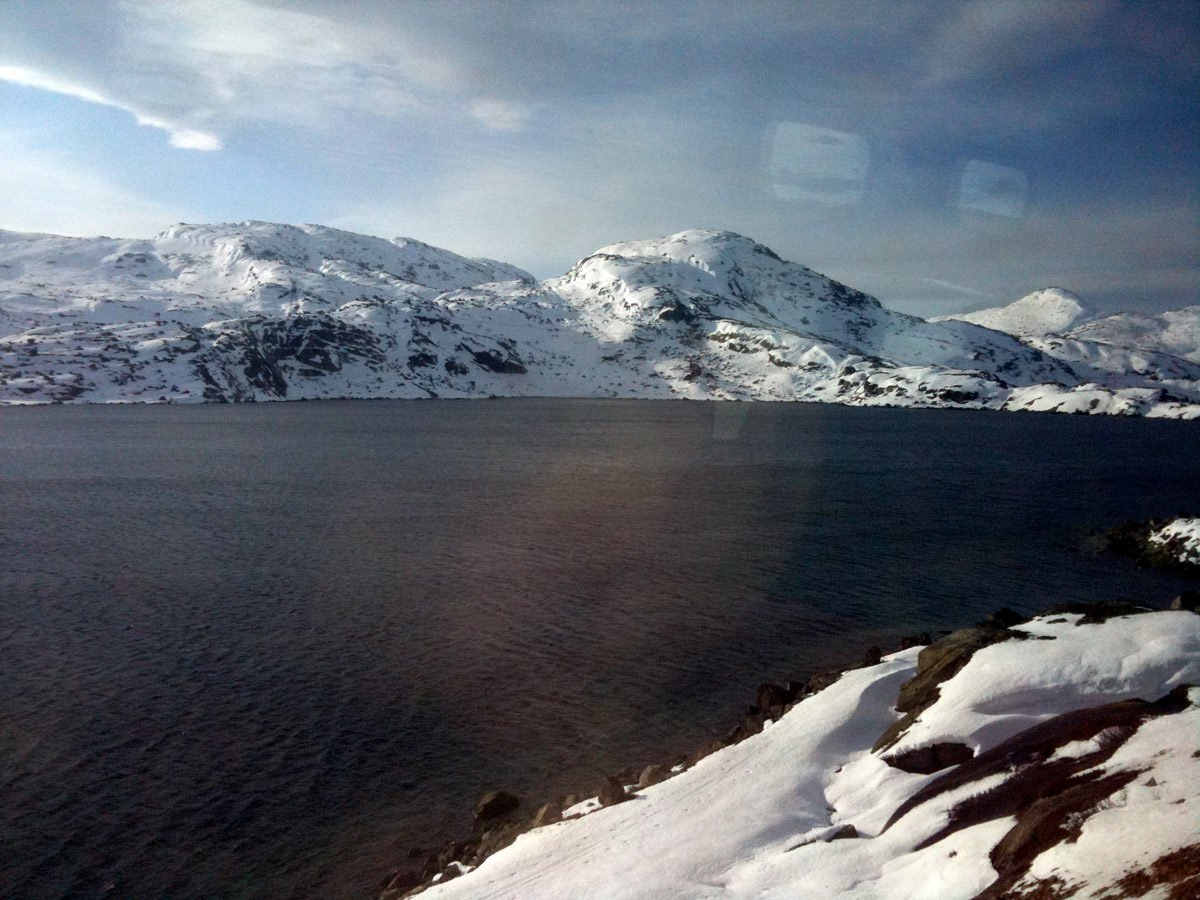
The Bergen line, as incredible as it is, does not escape some of the madness of politicians and it gives me a chill down the spine to read some ideas to make the train line more profitable. One was a suggestion that Norway couldn't afford any long distance rail routes and abandon them altogether, which was thankfully ignored.
Another was to drive a motorway through the route or, just every bit as bad, to build a high speed rail line. People were gasping as we travelled up the glacier, gasping in awe at the beauty on display and to lose the rail line to something as tedious as saving a bit of money, well, that's just stupid. The line is a perfect thing.
The Flåm Railway
The Flåmsbana is such a revered and beautiful journey that there is a real buzz as we board the train. People rush to get window seats and as we start our journey, people jostle for a good view but will also move aside to let others get a good view. Perhaps this level of natural beauty brings out the best in people?
I know that the journey to Flåm is steep, but reading this makes me marvel even more at those that made the railway: “It exits the tunnel onto an artificial shelf on a cliff which falls several hundred meters down”
The first station exists purely to let us see the Kjosfossen waterfall, falling for 225 metres. It pounds past the viewing platform, spraying everyone with a fine mist and exciting all the kids. Fun fact! The waterfall powers the Flåm line.
Occasionally, a mysterious dancing woman called the huldra will come out and entertain the tourists. She is a spirit of the forest and only appears in summer when there are many tourists about. It’s enough to make you think she is actually a performer from the Norwegian ballet school, so fond of attention is she.
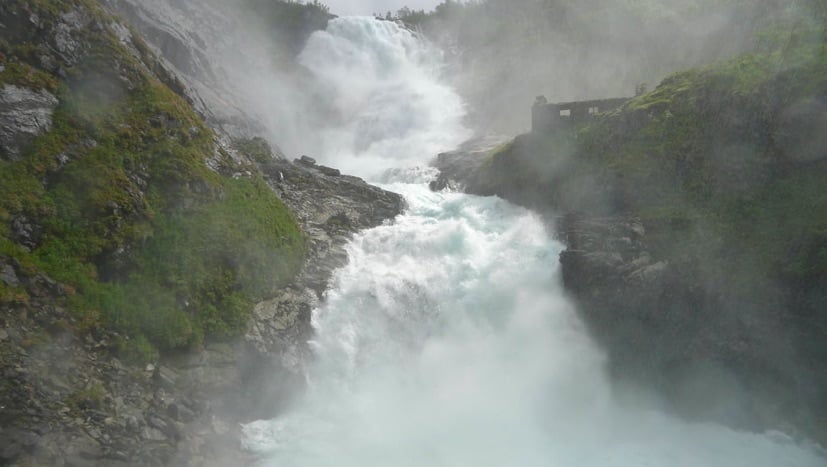
That one stop is the only one we get out at and from then on we steadily make our way down the mountain, with the landscape opening up in all directions ever more beautiful. The shape of the valley becomes apparent, opening up like the most elaborate pages from a book you’ll ever see. More waterfalls come into view and everywhere the lush green of the grass and trees and the greys of the rock make up the colour palette.
A few minutes before Flåm station, Flåm church comes into view. It’s at this point that you’ll hear about the floods of 2014 which damaged the church, leading to its closure this summer. Evidence of the damage is still visible and it is easy to imagine the river breaking its banks. The river is broad and powerful, but also spectacularly clear.
The village of Flåm
While in Flåm, we stayed at Brekke Gard Hostel, an absolute bargain at 900kr for two nights. Accommodation is basic, with just a bed, somewhere to hang your clothes, a chair and bedside table to keep you company but the hostel’s setting is spectacular enough to make any concerns about home comforts seem greedy.
There’s a large communal kitchen, but don’t expect much conversation from the residents. Norway, its people and its tourists aren’t hot on chatting and that is one of the best things about the country. Peace and quiet is hugely underrated.
Any money saved from the hostel is worth spending at Flåm’s wonderful microbrewery. The building goes all-out Viking on us, from the bar with its elaborately carved chairs and tremendous fireplace which would be the cosiest spot in town come the winter months. We had a drink in the bar and then went upstairs to the Ægir brewpub.
The food, as with the Norwegian portions I had been witness to, was enormous. They make their own bread there, a moist loaf with rosemary and salt crust. It couldn’t be improved and reminded me that whoever said bread is sweets for adults was spot on.
The main meal I had was pork shank glazed with honey, with mash and steamed vegetables and it was one of those rare meals where you find yourself unable to carry on conversations because it’s that good. Soon, all the space to eat any more ran out and pudding was passed on.
We sampled the beer tasting selection, and I’d recommend you to do the same. A wobbly walk back to the hostel gives you a chance to take in the silence of Flåm at night, a reminder that taking time to slow down occasionally is a good move.
Things to do in Flåm
Despite its size, there’s much to do in Flåm if you are staying for a day or two. We started out our morning at Toget Cafe for a coffee and a bun which came in at 70kr each. There is a co-op around the corner to get fresh fruit and snacks if you’re out for the day. The area is home to many walks of differing degrees of difficulty and this link is a great guide to the main ones.
We took routes 3, 4 and 7 and found that all offer vistas to die for, some challenging climbing and well marked paths. Route 3 to Brekkefossen waterfall goes directly behind the hostel so it is the perfect walk for anyone staying there. The viewpoint from Brekkefossen waterfall is nothing short of sensational, with the whole valley set out beneath you, a surging waterfall to your right and the mountains everywhere else. It is a great spot for some contemplation and endless picture taking and the climb was easy enough for people to do it wearing converse trainers, though I’d advise against that!
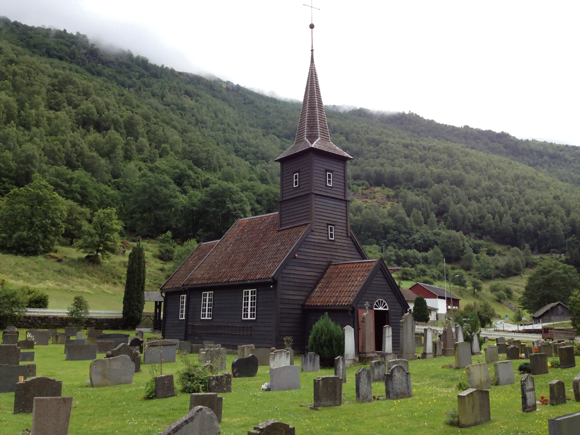
The walk to the currently closed Flåm church avoids the need to scramble up rocks or get startled by sheep, and it’s still very picturesque as you walk along the Flåmsbana and the river. Outside of the town itself, you will see a sign pointing to Kvernhus that takes you to a grass-covered hut open for you to see how flour was made.
It is mildly diverting and on the riverbank where fairies/people have made a huge variety of rock piles. You can couple this walk with walk 7 which takes you up a winding road to a point above the tree line where you will see Flåm and beyond from another perspective.
If you want to splash out, there are fjord safaris available using RIB boats available where instead of seeing the fjords at a gentle pace, you’ll rocket round the water. At 600kr (in the low season) it was a bit steep for us. However, you can get discounts off the cost by using your Norway in a Nutshell ticket, which gives you a free Fjord Pass.
The famous Nærøyfjord
On leaving Flåm, the Norway in a Nutshell tour has you travel to Gudvangen by ferry, where you get to take in the Nærøyfjord, a fjord famous for hits narrow approach to Gudvangen, at some points being just 500 metres wide.
Despite the appalling weather on the journey, the landscape was dramatic enough for many people on the ferry to force themselves outside to take photos and gasp as the sides of the fjord seem almost close enough to touch, with the fog and weather creating a more enclosed atmosphere.
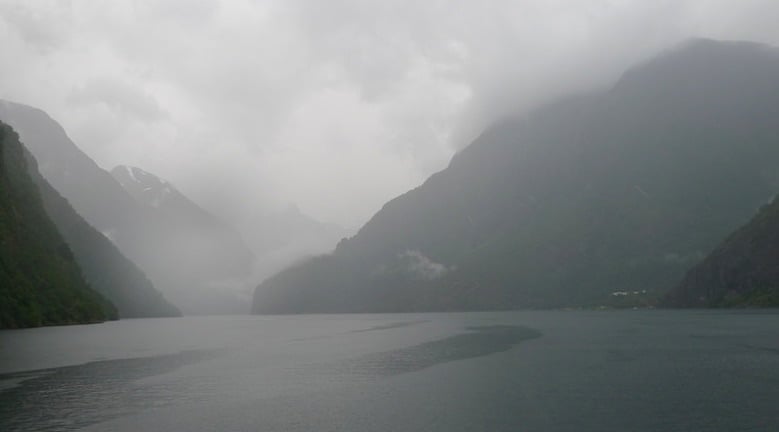
The rain kept mostly at bay for the first half of the journey and so visibility was good allowing Aurland to hove into view with the colourful wooden houses brightening up the landscape and a further inlet for the fjord to peel off offering enticing views.
As an aside, a great day trip can be had by taking the ferry to Aurland and then the bus back and you will get to see the Stegastein viewpoint – we never got to do this but it looks overwhelming, plus you get to stand over the edge of a fjord with just a pane of glass between you and a squishy end.
A highlight of the ferry trip to Aurland is the view changing every time the ferry turned a corner so make sure you are facing forwards whenever you get the chance. The second half of the journey begins as the fjord narrows and the ferry slows down to allow you to be entranced by the view, even through the rain.
The cliffs push in further, the waterfalls feel closer and more powerful and the view becomes three elements; the water, the sky and the cliffs. It is nature stripped back to the most basic of forms.
On to Bergen
It doesn’t matter that the ferry is an old passenger boat and because the journey is the thing, the mode of transportation really doesn’t matter. It is a journey as beautiful as any so far in the journey and leads me to consider if Norway really is the nation gifted with the best looks on earth.
Read part three of Chris does Norway on a Budget as he heads to Bergen.

